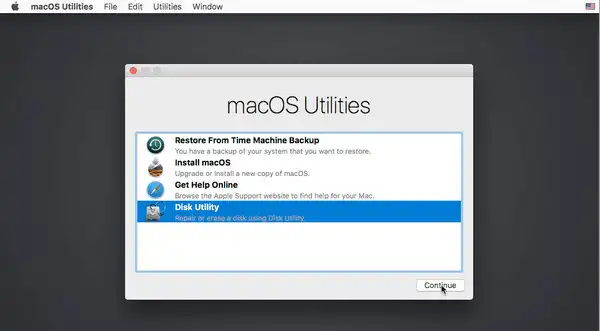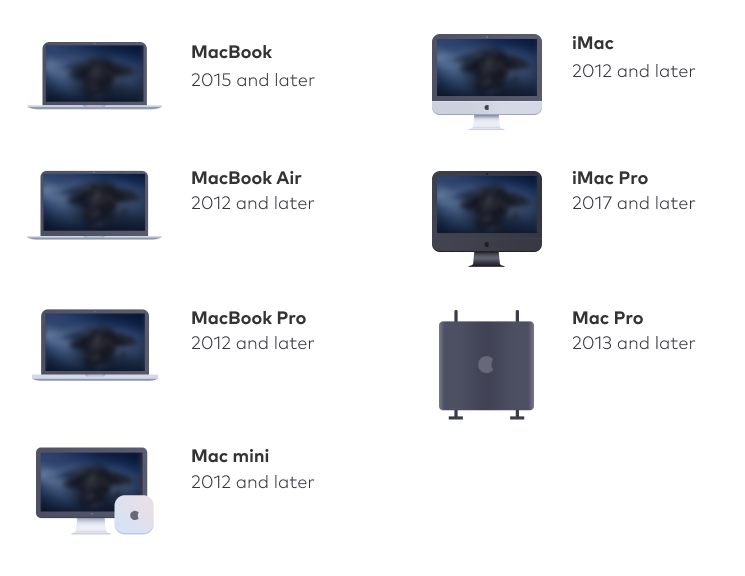Download macOS Catalina 10.15 Installer with macOS Catalina Patcher Although it may appear easy to try out the conventional approach of downloading macOS update in Software Update, there are a few known issues on old Macs shipped in 2013 or earlier, meaning the download progress can not be completed successfully. Select your USB drive installer from the boot list. If your Mac is currently running a version of macOS that predates High Sierra or Mojave, you'll need to format your hard drive to APFS before. Upgrading from Mac OS X Older Versions. Any older versions of Mac OS X 10.7-10.10 have to first upgrade to Mac OS X El Capitan 10.11 version before upgrading to macOS Catalina, which you can download from Apple’s Catalina download page. To do this, follow these steps: Launch the System Preferences menu, and thenselect Software Update.
You can download a macOS Catalina Patcher from a developer known as DOSDude1. The patch will enable you to install Catalina on an older Mac. The Catalina hack doesn't work with every Mac, but many. The first main reason why users can’t install macOS Catalina is compatibility problem. If your Mac doesn’t support macOS Catalina, you won’t be able to proceed with the installation. You need a fairly recent Mac to be able to run macOS Catalina. Here are the Mac models that support the newest macOS: MacBook (2015) and later.
Install macOS Catalina on an Old Mac
Many people still love their old iMacs. You too know one? Well, I know a few as I happen to be one of them. Still in love with my old 2011 year 27” iMac that till now ran Mac OS High Sierra. And then, one day it stopped upgrading anymore. Reason…? Apple had changed everything to a 64-bit distribution system leading to first of its types Mac OS Mojave. I so badly wanted a solution to upgrade my system to the new OS but it just failed. I almost hated Apple for this as they bullied us to purchase a new computer. I was adamant though to keep trying and upgrade this to the new Mac OS. Several of our customers called us in to find a way to upgrade their MAC computers but we “Computer Repair Onsite” did not have a solution for them. Time passed and soon there was this new Mac OS by Apple called Catalina. It looked really cool and my eagerness to get upgraded on it increased even more. Finally I got to know about a patching tool, called DosDude.

DosDude Catalina Patcher is a third-party tool that helps the users to patch the Mac OS Catalina installer on otherwise unsupported Macs. Of course, just because you can do this, doesn’t mean you should, as there’s a good chance that performance will be sub-optimal, while Catalina features may depend on modern Mac hardware (Sidecar, for example) and likely won’t work at all. You can find a compatible list of unsupported Macs for Catalina Patcher on the DosDude website.
Despite these risks, I was happy that at last my old Mac will have the feel of the new OS. So, I tried that and tried successfully. For all the readers as well, if you wish to try this work-around, then do that at your own risk or employ someone technical enough, like Computer Repair Onsite, who can manage a successful transformation of your Mac computer to the new life. For everyone’s knowledge, I am sharing quick steps that will help you to install Mac OS Catalina on your Macs. Here you go:
- Make sure your computer is bnacked on a Time Machine.
- Download the latest version of the Catalina Patcher by DOSDude1.
- Open the application and select Download a Copy or browse a copy from local disk.
- Connect a USB flash drive (formatted as MacOS Extended Journaled) into your Mac and select Create a bootable installer from the three Installation Method options.
5. Select your flash drive volume from the list and click Start.
6. When the installer is complete, use the pendrive for your unsupported Mac and hold down the Option key when the reboot tone sounds.

7. Select your USB drive installer from the boot list.
8. If your Mac is currently running a version of macOS that predates High Sierra or Mojave, you’ll need to format your hard drive to APFS before installing Catalina.
9. Choose Reinstall macOS and wait for the new version of macOS to install.
10. After the installation has completed, you should restart the Mac in Recovery mode again, choosing the drive that contains the bootable installer.
11. Now choose macOS Post Install and the required patches will be installed on your Mac so that Catalina can work.
12. When the patches have been applied choose Force Cache Rebuild.
13. Restart.
14. When it reboots, your Mac should now boot into a fully working copy of macOS Catalina.
15. Back up your Mac before starting the whole process.
Posted in : technology, UncategorizedTo get the latest features and maintain the security, stability, compatibility, and performance of your Mac, it's important to keep your software up to date. Apple recommends that you always use the latest macOS that is compatible with your Mac.
Learn how to upgrade to macOS Big Sur, the latest version of macOS.
Check compatibility
The version of macOS that came with your Mac is the earliest version it can use. For example, if your Mac came with macOS Big Sur, it will not accept installation of macOS Catalina or earlier.

If a macOS can't be used on your Mac, the App Store or installer will let you know. For example, it might say that it's not compatible with this device or is too old to be opened on this version of macOS. To confirm compatibility before downloading, check the minimum hardware requirements:
- macOS Catalina 10.15 hardware requirements
- macOS Mojave 10.14 hardware requirements
- macOS High Sierra 10.13 hardware requirements
- macOS Sierra 10.12 hardware requirements
- OS X El Capitan 10.11 hardware requirements
- OS X Yosemite 10.10 hardware requirements
Download macOS using Safari on your Mac
Safari uses these links to find the old installers in the App Store. After downloading from the App Store, the installer opens automatically.
- macOS Catalina 10.15 can upgrade Mojave, High Sierra, Sierra, El Capitan, Yosemite, Mavericks
- macOS Mojave 10.14 can upgrade High Sierra, Sierra, El Capitan, Yosemite, Mavericks, Mountain Lion
- macOS High Sierra 10.13 can upgrade Sierra, El Capitan, Yosemite, Mavericks, Mountain Lion
How To Install Macos Catalina On Older Mac

Install Macos 10.15 Catalina On An Unsupported Mac
Safari downloads the following older installers as a disk image named InstallOS.dmg or InstallMacOSX.dmg. Open the disk image, then open the .pkg installer inside the disk image. It installs an app named Install [Version Name]. Open that app from your Applications folder to begin installing the operating system.
- macOS Sierra 10.12 can upgrade El Capitan, Yosemite, Mavericks, Mountain Lion, or Lion
- OS X El Capitan 10.11 can upgrade Yosemite, Mavericks, Mountain Lion, Lion, or Snow Leopard
- OS X Yosemite 10.10can upgrade Mavericks, Mountain Lion, Lion, or Snow Leopard